
In this brief article, the author considers the ways that readers interpret text. An interesting comparison between reading and viewing a painting is worth a look.
- Subject:
- Arts
- English Language Arts
- Material Type:
- Reading
- Date Added:
- 12/01/2023

In this brief article, the author considers the ways that readers interpret text. An interesting comparison between reading and viewing a painting is worth a look.

Designed to help students think about their reading and writing skills, this page offers three different ways to interpret and discuss texts.
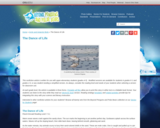
This nonfiction article, written for students in grades 4-5, explores the life and seasonal migration of the sanderling bird. Modified versions are available for students in younger grades.

At this website, read all twenty-two chapters of Daniel Defoe's "Moll Flanders." Included is a brief paragraph introducing the text and its main character.

The National Archives and Records Administration (NARA) provides an extensive overview of the Declaration of Independence. View the actual document, explore the history of the document as well as it's "stylistic artistry," and much more.
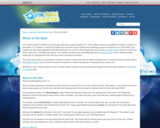
This expository article for elementary students describes the dinosaurs that lived in polar regions as well as the adaptations that helped them survive in the dark and cold environment. Modified versions for younger grades are available.

Here, read the entire text to "Fifty Years in Chains; or, The Life of an American Slave," which was written by Charles Ball and originally published in 1859.

Study Skills

This is an interesting site from artist Richard Deurer that breaks down the Egyptian Book of the Dead into understandable sections. Everything is cross-referenced, and the resource even contains the complete translated text. RL.9-10.6 cultural World Lit

Enchanted Learning provides several examples of graphic organizers that can be used for gathering Who, What, Where, When, and Why information, either for reading comprehension or prewriting. These template suggestions can only be printed out by Enchanted Learning members, but all others can see them and they would be easy to re-create.
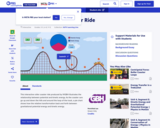
This interactive roller coaster ride produced for Teacher's Domain illustrates the relationship between potential and kinetic energy. As the coaster cars go up and down the hills and around the loop of the track, a pie chart shows students how energy is transformed back and forth between gravitational potential energy and kinetic energy.
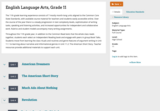
The 11th grade learning experience consists of 7 mostly month-long units aligned to the Common Core State Standards, with available course material for teachers and students easily accessible online. Over the course of the year there is a steady progression in text complexity levels, sophistication of writing tasks, speaking and listening activities, and increased opportunities for independent and collaborative work. Rubrics and student models accompany many writing assignments.Throughout the 11th grade year, in addition to the Common Read texts that the whole class reads together, students each select an Independent Reading book and engage with peers in group Book Talks. Students move from learning the class rituals and routines and genre features of argument writing in Unit 11.1 to learning about narrative and informational genres in Unit 11.2: The American Short Story. Teacher resources provide additional materials to support each unit.

In this short unit, students will spend three lessons exploring the importance of themes and main ideas in fiction and informational texts. Now would be a good time to have them take an assessment of their reading and writing skills. They'll explore theme through O. Henry's classic short story "The Gift of the Magi" and consider how this piece compares to the main idea in the article "The Proven Power of Giving, Not Getting."

In this lesson, students will read a famous short story by the author O. Henry and consider how gift giving affects both the giver and the receiver. They’ll learn about aphorisms and create their own bumper sticker.

This site provides a detailed overview of "Everyman," and includes the full text of the work, related essays and articles, and additional resources.

At this website, read the full text of James Fenimore Cooper's novel, "The Prairie." Includes a brief introductory paragraph that overviews the context, characters, and situations within this text.

In this interactive activity adapted from the University of Utah's ASPIRE Lab, students will investigate frequency in terms of trampoline jumps, pendulum swings, and electromagnetic waves.

This pathway contains guidance for how to create an account on LabXchange, and the differences between the Educator and Learner roles. You will also learn how to search the library for public content, and how to add content to your own private library.
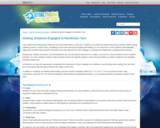
This article describes how to help students engage with nonfiction text by asking questions, identifying facts, making connections, and reflecting on the text. A template for use with students is included.
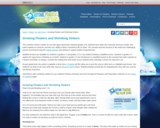
This expository article, written for students in grades 4-5, explains why ice floats and how this is essential to life on earth. Modified versions are available for younger students.